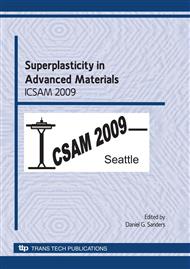p.93
p.103
p.113
p.119
p.125
p.135
p.141
p.153
p.169
Contact Sensors for Accurate Monitoring and Prediction of Sheet Deformation during Hydro/Pneumatic Forming Operations
Abstract:
In spite of the numerous advantages of hydro/pneumatic forming operations over the conventional mechanical ones, the inability to accurately monitor the progress, and determine the end point, of the process represents a major setback. Therefore, this effort presents a simple technique for providing a direct feedback on the sheet’s advancement during the process by implanting contact sensors across the surface of the forming die at selected locations. The technique is shown to be instrumental in providing a means of control over the process particularly for constant pressure forming practices and thus eliminating the need for any trial-and-error runs. More importantly, the light is shed on how the technique can be utilized to validate and improve the constitutive and Finite Element (FE) models of the unique class of lightweight alloys often formed by hydro/pneumatic operations; a matter essentially needed for constant strain rate forming practices.
Info:
Periodical:
Pages:
125-132
Citation:
Online since:
March 2010
Authors:
Price:
Сopyright:
© 2010 Trans Tech Publications Ltd. All Rights Reserved
Share:
Citation:


